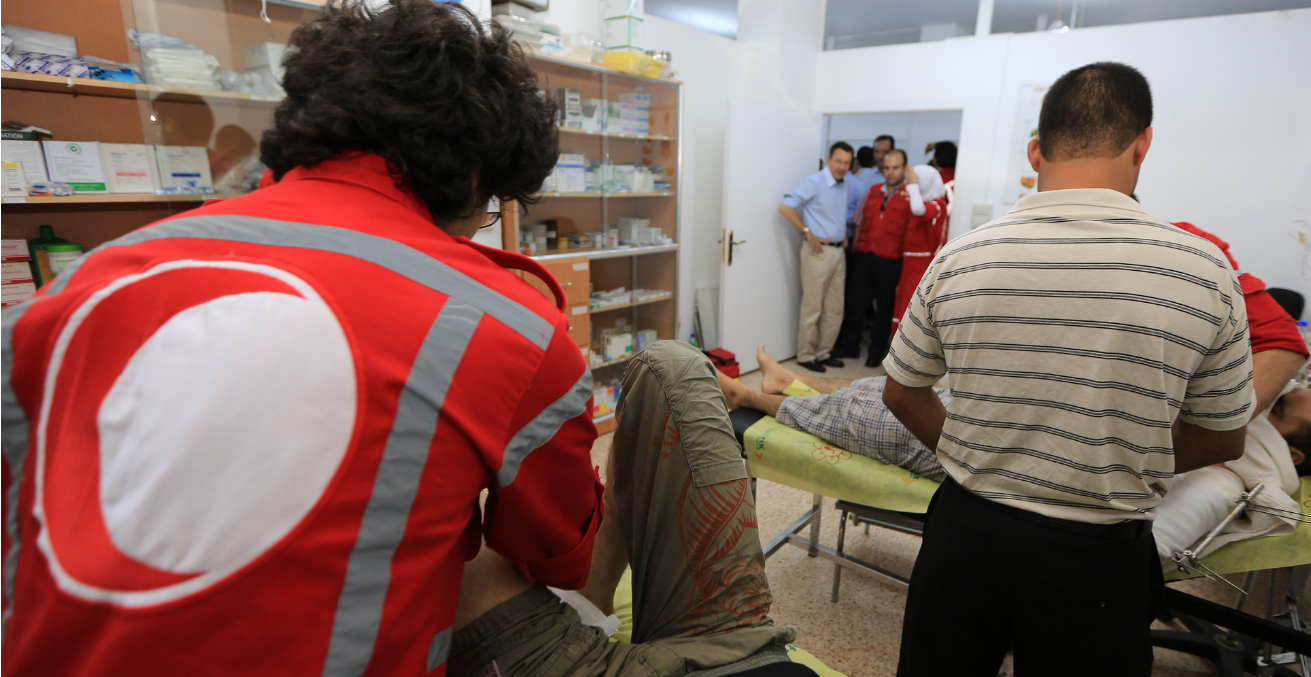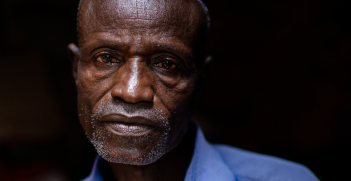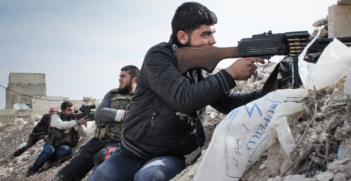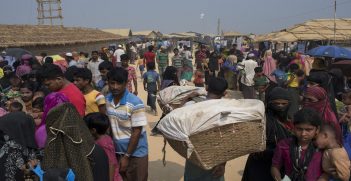Local Organisations are at the Heart of the Response in Syria Crisis

Though a ceasefire agreement has been reached between Russia and Turkey, tension still pervades the atmosphere in northwest Syria. Throughout this latest escalation, humanitarian organisations have once again risked their lives to deliver vital emergency response services to meet the immediate needs of millions of Syrians caught up in this catastrophe.
The war in Syria is entering its tenth year. The brutal conflict is now longer than both World Wars. The most recent fighting in Idlib saw almost a million people forced to run for safety -the worst wave of displacement since fighting began. Infrastructure has been decimated, freezing conditions worsen this fresh humanitarian crisis amid skyrocketing inflation, and there is little access to the basics of food and other household goods. Humanitarian agencies are casting a longer view, grappling with how to help millions of people all over the country as they are trying to recover from one of the most brutal wars ever.
This war has been staggering and devastating, with destruction on a vast scale, causing a refugee crisis that has reverberated around the world. There has been a shocking disregard for the laws of armed conflict. Tragically, it is far from over.
Numbers are a poor proxy for the horrific reality that Syrian people endure. Yet the figures are staggering. Some 11.6 million people – out of a current population of around 18 million people – are still in need of humanitarian assistance. One in two Syrians have been displaced by the conflict, either abroad or within the country. The United Nations estimates there are 6.2 million internally displaced people in Syria including 2.5 million children. Some 5.6 million Syrians have sought refuge overseas. Imagine the whole population of Sydney or Melbourne relocating due to war.
In 2018, up to 1.3 million people were newly displaced. The last UN official death toll figure stood at 400,000 more than five years ago. There have certainly been tens of thousands more casualties since.
The impact on Syria’s infrastructure and society is wholescale. The International Committee of the Red Cross estimates that 50 percent of Syria’s hospitals and clinics are not open or are only partially functioning. At least two million children cannot go to school. When people return home to start to rebuild, they find their towns ruined – buildings destroyed, homes in pieces. Buildings still standing are often contaminated with explosive remnants, putting families, particularly children, at serious risk.
The Syrian conflict has waxed and waned on our daily news feed for years, with noticeable spikes: the tragic images of the little boy washed up on a beach in Greece in 2015; the footage of shelled out buildings and ghost like villages following a horrific battle in Aleppo; the scenes of women and children fleeing to Turkey with nothing but their clothes, desperation on their faces that is almost beyond comprehension.
Yet local and national Syrian humanitarian organisations have prevailed despite huge obstacles. Highly effective local and national humanitarian organisations have played a crucial role leading the humanitarian operations as everyone struggled with issues of access and protection.
The UN estimates that around up to 700 “local” humanitarian groups have been started since the start of the conflict, with around a fifth of them active in Syria itself. In keeping with the best of humanity, professional medical groups, community activists, local non-government organisations (NGO), and diaspora organisations have stepped up, driven by a desire to provide essential assistance to their communities, particularly in hard to reach areas. Partnerships have become essential in the Syria response, driven in large part by huge challenges in access, particularly in besieged areas.
The overall response has thrown a spotlight on deficiencies in the formal humanitarian system. As the Overseas Development Institute noted in 2015, “donors and international aid agencies need to recognise that Syria is a messy, vicious and multi-sided conflict where rules and procedures drafted in donor capitals are not necessarily applicable.”
Due diligence is paramount, but it needs to be calibrated by a realistic view on what is suited and possible. Local partners need to be seen as more than sub-contractors. Supporting Syria to rebuild civil society needs to be driven by what the local and national organisations need to do their job. Most importantly, there needs to be a genuine recognition from donors and international organisations of the capable, sustained, and committed effort that local and national organisations have played, despite overwhelming challenges.
The most visible, most active, and possibly the most scrutinised “local” organisation is the Syrian Arab Red Crescent (SARC), the largest humanitarian organisation in Syria. SARC, like all 192 National Red Cross Red Crescent Societies, has a special, officially-recognised status and role to provide aid working alongside Syria’s public authorities. SARC has a unique role as a neutral and independent humanitarian organisation operating within national laws.
In the current conflict, SARC has been providing relief and assistance as part of the national response, and has been delivering assistance to all areas of the country. A study by British Red Cross and ICRC stressed SARC’s demonstration of strong and continued adherence to international Red Cross Red Crescent Principles, including neutrality, independence, and impartiality.
SARC is playing a huge role. It is the Red Cross Red Crescent’s main operational partner supported by ICRC and the International Federation of Red Cross and Red Crescent Societies. It is the core operational partner for all other humanitarian organisations based in Damascus, including UN agencies and international NGOs. It also has a coordinator role assigned by the Government of Syria. Described as “indispensable” by a senior UN representative, there is wide agreement that no other agency could have achieved the scale up and aid delivery that SARC has managed since 2011, given the extremely challenging context.
SARC has experienced tragic consequences firsthand. Since the start of the conflict, 65 SARC volunteers have been killed. Ambulances and other vital equipment have been destroyed. Just this week in Idlib, two SARC offices were occupied and looted by an armed group. This means Syrians in that area will be denied 10,000 hot meals prepared daily, and won’t have access to first aid and incubators.
The scale of the destruction, the severity of the conflict and the ongoing precarious situation means a humanitarian response will be needed in Syria for many years. The huge challenge ahead will be to bring together all stakeholders who have a role to play – from humanitarian organisations, the private sector, and donors.
Australia is to be commended for its response since 2011 by working with partners to provide humanitarian protection and assistance. In 2016, it stepped outside the usual funding model pursued by donors and committed to a three-year $220 million initiative, making it Australia’s first multiyear package in response to a protracted crisis.
It paid off. A recent Department of Foreign Affairs and Trade-commissioned independent evaluation showed the assistance package was well designed and the mixing of funding approaches, increased program efficiency, and effectiveness and gave Australia greater influence. Partnerships were “diversified and localised.” There were positive results around disability inclusion and education outcomes. And Australia’s humanitarian partners maximised value for money.
As DFAT reflects on its next Syria response, it is strongly encouraged to continue this multiyear focus and find ways to support local and national organisations, as well as remaining responsive to the needs, risks, and constraints of protracted crises.
Humanitarian assistance is vital, but it is a stopgap measure. There must be more pressure for a political solution to end the suffering that the people of Syria have endured for far too long.
Louise McCosker is Humanitarian Diplomacy Lead, International Programs, Australian Red Cross
This article is published under a Creative Commons Licence and may be republished with attribution.





